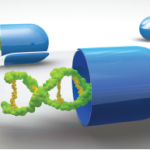The other thing to mention here is that in these early trials, they define ‘non-severe’ as a Five Factor Score of 0, and ‘severe’ as a score of 1 or more. But in the guideline, we define ‘severe’ as any organ- or life-threatening manifestations. One needs to use some clinical judgment because the Five Factor Score doesn’t include all the potential life-threatening or organ-threatening manifestations.
As you noted, in one of the early studies by the French Vasculitis Study Group, if patients had a Five Factor Score of 0, meaning non-severe, then they treated them with glucocorticoid monotherapy and used DMARDs only if they flared.8 In that study there were patients who did fine with monotherapy, but there was a significant number of patients who flared, and I think that’s what led to the panel deciding on the conditional recommendation of using a DMARD with glucocorticoids. That has been my practice as well, because I’m worried about them flaring.
For severe disease, like you said, the treatment is a little bit more straightforward in the literature. Cyclophosphamide has played a dominant role in the early studies. We don’t have large studies regarding rituximab in PAN.
From the guideline—Recommendation: For patients with newly diagnosed PAN who have achieved disease remission with cyclophosphamide, we conditionally recommend transitioning to another non-glucocorticoid immunosuppressive agent over continuing cyclophosphamide.
Q: There’s a conditional recommendation for transitioning from cyclophosphamide to another DMARD; methotrexate or azathioprine are mentioned. Are they truly equivalent? Is there one you think most people favor?
Dr. Springer: The recommendation of switching from cyclophosphamide to a less aggressive immunosuppressive therapy is based on indirect evidence. We know cyclophosphamide increases the risk of cancers, especially bladder cancer, and this is based on the cumulative lifetime dose of cyclophosphamide. From the ANCA-associated vasculitis literature, we know that transitioning off cyclophosphamide after about three to six months decreases the risk of cancer dramatically. So part of that recommendation comes from the ANCA-associated vasculitis world.
As far as which DMARD to transition to, most of the experience in the literature is with methotrexate and azathioprine. There are other agents out there that we really don’t have a lot of data for, just because of how old the literature is. Plus, there are no big studies comparing methotrexate to azathioprine directly.
I can’t say I especially have a preference for one or the other. I think patient characteristics probably play the biggest role. If you have a young woman of childbearing age, you might not want to use methotrexate, just because of the potential impact on fertility and fetal toxicity side effects. If you have a patient with a low TPMT [thiopurine S-methyltransferase] level, maybe azathioprine isn’t the best choice. In the vasculitis literature in general, the methotrexate doses have typically been 15 mg per week or more, up to 30 mg per week. With azathioprine, you’re typically aiming for a dose of 2 mg/kg/day.



